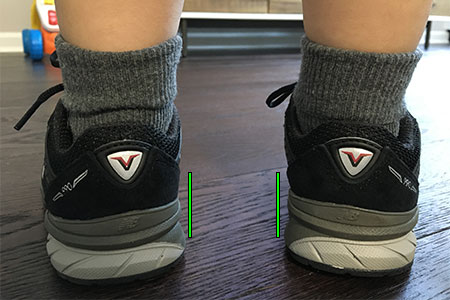Can Shoes Help Children with W Sitting Position? – What a Difference These Shoes Can Make!

As a children’s shoe fitter passionate about healthy development, I often get asked about the effects of the W-sitting position—and whether footwear can help. If you’ve noticed your child sitting with their legs in a W shape, you might be wondering if it’s harmful. While it’s common in young children, W-sitting can be a sign of underlying issues like low muscle tone, hypermobility, or pigeon-toed walking. The good news? Supportive footwear—and in some cases, orthotics—can play a key role in addressing these concerns and encouraging proper posture and alignment.
Is the W Sitting Position Harmful? – Watch Out for Underlying Conditions
Many children adopt the W-sitting position as a way to compensate for underlying weaknesses in their hips or core. While it may look harmless, sitting this way for long periods can signal deeper issues that deserve attention. Some of the most common reasons children prefer this position include:
Tight Muscles in the Legs or Hips. Pay close attention to how your child walks. Do their feet turn inward or appear pigeon-toed? This could point to muscle tightness affecting their gait and posture.
Low Muscle Tone. Frequent falls, delays in motor milestones, or slouched posture could indicate that your child is struggling with low muscle tone—making W-sitting feel more “stable” for them.
Hypermobility. If your child has flat feet, complains of foot or leg pain, or seems clumsy with poor balance, hypermobility may be at play. W-sitting often provides extra stability for children whose joints are overly flexible.

Why W-Sitting Can Harm Your Child’s Posture and Feet
Letting your child sit in the W position for long periods can do more harm than you might think. This posture puts stress on the hips and legs, leading to muscle tightness that can interfere with natural movement. Over time, it may cause your child to walk pigeon-toed, affecting their balance, posture, and even leading to foot, leg, or lower back pain. It’s a habit worth breaking early to support healthy development.
How Can W Sitting Be Prevented?
The first step is to gently encourage your child to try alternative sitting positions that promote better posture and muscle development. Some great options include:
- Long sitting (legs stretched straight in front)
- Side sitting (legs bent to one side)
- Criss-cross or tailor sitting
- Sitting on a small bench or stool
The key is consistency—reminding your child often and praising their efforts can make all the difference!
How Can Shoes Help?
Supportive Shoes: A Proactive Approach. Shoes designed specifically for children who frequently sit in the W position can provide the necessary support to encourage proper posture. These shoes often come with features such as arch support, firm heel counters, and cushioned insoles to promote better alignment of the feet and legs.
You don’t need to splurge on orthopedic shoes—just a good pair of everyday sneakers with the right support can make a big difference. While supportive shoes won’t stop your child from sitting in a W position on their own, they can significantly improve your child’s walking gait, posture, and overall stability.


Not all shoes will help your child walk and run straighter—what works for one child might not work for another. However, in many cases, the right pair of supportive shoes can make a remarkable difference in your child’s walking gait and overall posture.
Reach Out for Shoe Recommendations
If you’re looking for supportive shoes to help improve your child’s walking gait and posture, feel free to email me at fittingchildrensshoes@gmail.com. I’ll send you tailored shoe recommendations based on your child’s unique needs. Just include your child’s shoe size and foot width (narrow, medium, wide, or extra wide), and I’ll take care of the rest!
I want to share some honest feedback from adults who sat in a W position as children and are now dealing with the effects later in life. Their stories aren’t meant to scare you, but to highlight why it’s so important to discourage prolonged W-sitting. To keep things balanced, I’ll also share experiences from those who sat this way but never faced any problems—showing there’s more than one side to the story.
Real Stories About Sitting in the W Position
“My husband spent most of his childhood sitting in the W position, and now, in his forties, he’s had both hips replaced. He walks with his feet turned inward and relies on orthotics every day.”
“I struggled with low muscle tone and W-sat throughout my childhood and even into adulthood. Now at 40, I constantly battle hip and knee pain. When my daughter was diagnosed with low muscle tone, I made sure to discourage her from W-sitting.”
“I’m in my thirties and still recovering from years of W-sitting as a child. I deal with in-toeing and, as I get older, knee, hip, and foot pain. I wish someone had stepped in to help me earlier. Today, I depend on special shoes with orthotics to manage the discomfort.”
“Even though I’m 35 and sat in the W position all the time—and honestly still do—I’ve never experienced any hip or knee issues.”
“I’ve been W-sitting for over 50 years and maintain perfect posture with no foot, leg, or back pain to show for it.”
